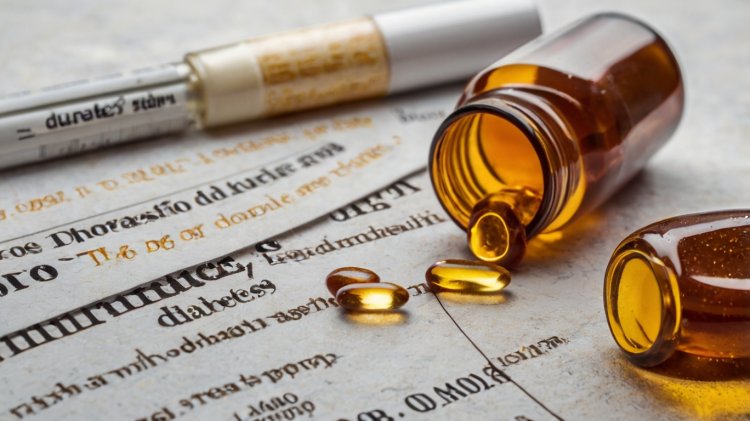Sucralose and Diabetes: Benefits, Risks, and Tips for Safe Use
Explore how sucralose impacts diabetes management. Learn about its benefits, risks, and how to use it safely to manage blood sugar and overall health

Introduction
Managing diabetes often involves making strategic dietary choices, including reducing sugar intake. Sucralose, a popular artificial sweetener, promises the sweetness of sugar without the calories. But is it truly a safe option for individuals with diabetes? This article explores sucralose’s benefits, risks, and effects to help you make an informed decision.
What is Sucralose?
Sucralose, commonly known by its brand name Splenda, is a calorie-free artificial sweetener widely used in processed foods and beverages. It’s about 600 times sweeter than sugar, meaning only a small amount is needed to achieve a similar level of sweetness.
Benefits of Sucralose
Zero Calories
Sucralose provides sweetness without adding calories, making it a popular choice for weight management.
Sweetness with Less Quantity
Being significantly sweeter than sugar, sucralose allows for reduced overall intake while maintaining flavor.
May Prevent Tooth Decay
Unlike sugar, sucralose doesn’t contribute to tooth decay, offering an added benefit for oral health.
Risks Associated with Sucralose
Impact on Gut Health
Studies suggest that sucralose may disrupt the balance of gut bacteria, potentially leading to inflammation and other health issues.
Potential Blood Sugar Effects
While sucralose is marketed as having little to no impact on blood sugar, research shows it may cause spikes in individuals who are new users or have severe obesity.
Risks with High-Temperature Cooking
Sucralose can break down at high temperatures, forming potentially harmful compounds. This makes it unsuitable for cooking or baking.
How Does Sucralose Affect People with Diabetes?
Limited Short-Term Impact
For regular users, sucralose appears to have minimal immediate effects on blood sugar levels.
Risks for New Users
Recent studies indicate that sucralose may raise blood sugar and insulin levels in individuals not accustomed to artificial sweeteners.
Metabolic Concerns
Over time, sucralose may contribute to glucose intolerance and other metabolic changes, which can exacerbate diabetes-related complications.
Tips for Safe Use of Sucralose
1. Use in Moderation
The FDA recommends an Acceptable Daily Intake (ADI) of 5 mg per kg of body weight. For a 150-pound individual, this equates to about 28 Splenda packets daily.
2. Avoid Cooking with Sucralose
To prevent exposure to harmful compounds, avoid using sucralose in high-temperature recipes.
3. Monitor Blood Sugar Levels
Regularly check your blood sugar levels after consuming sucralose to gauge its impact.
4. Consult Your Doctor
Before incorporating sucralose into your diet, discuss its suitability with your healthcare provider.
Should You Add Sucralose to Your Diet?
Evaluate Current Consumption
Sucralose is already present in many low-calorie snacks, drinks, and gums. Check product labels to understand your intake.
Substitute Strategically
Gradually replace sugar with sucralose in drinks or foods to reduce calorie intake without compromising taste.
Consider Alternatives
Natural sweeteners like stevia or monk fruit may provide similar benefits with fewer risks.
FAQs
1. Is sucralose safe for people with diabetes?
Sucralose is generally safe for individuals with diabetes when consumed in moderation. However, its long-term effects require more research.
2. Can sucralose raise blood sugar levels?
In some individuals, particularly new users or those with obesity, sucralose may cause a slight rise in blood sugar levels.
3. Is cooking with sucralose safe?
Cooking with sucralose at high temperatures is not recommended, as it can break down into potentially harmful compounds.
4. What are alternatives to sucralose?
Natural options like stevia, honey, or monk fruit may be better alternatives for those concerned about sucralose’s risks.
5. How much sucralose is safe to consume daily?
The FDA’s ADI for sucralose is 5 mg per kg of body weight per day, which equals roughly 28 packets for a 150-pound individual.
Conclusion
Sucralose offers a calorie-free alternative to sugar, making it an attractive option for weight and diabetes management. However, potential risks to gut health, blood sugar levels, and safety during cooking warrant caution. By practicing moderation and consulting with your doctor, you can decide whether sucralose fits your dietary needs. Remember, the key to managing diabetes lies in informed and balanced choices.










